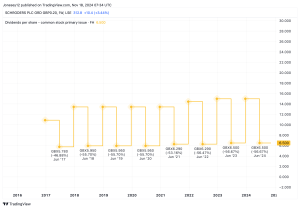- The closures of Silicon Valley Bank on March 10 and Signature on March 12 led to halts for the stocks — at $106 per share for SVB and $70 per share for Signature.
- That caused problems for traders who had bet the stocks would decline.
- The Options Clearing Corporation declared that the options should be determined on a broker-to-broker basis, sending investors digging through their options agreements to figure out next steps.
The sudden failures of Silicon Valley Bank and Signature Bank last month created a nervous waiting game for options investors, showing that even winning trades can be risky in the derivatives market.
The closures of SVB on March 10 and Signature on March 12 led to halts for the stocks — at $106 per share for SVB and $70 per share for Signature.
This halt, and how regulators and brokerage firms handled the outstanding options contracts, turned simple trades into a big headache for retail investors. In some cases, traders had to put up additional cash and take on potential risk or see their timely bets expire worthless.
This was a problem for even more sophisticated retail traders such as Shaun William Davies, an associate professor of finance at the University of Colorado-Boulder, who had purchased Signature put options on brokerage platform Robinhood with a $50 strike price as a hedge against market volatility.
A put option gives the holder the right to sell the stock at the strike price and serves as a bet that the stock will go down. A put contract is also attractive because it has limited downside for the holder.
Logically, that trade should have been a big winner, but Davies’ options were technically out of the money, based on the last traded price — that is, the share price at the time was above his $50 strike price — and the stocks were now illiquid. The put options were set to expire March 17.

Davies said that usually he would sell his winning options trades before expiration, so he does not have to deal with the settlement process. But the halt meant that he had to convince Robinhood to open a short position to exercise his options and then allow him to close out the short position whenever the stock began to trade again.
The brokerage firm originally told Davies that it would not allow him to open a short position, according to messages with customer support viewed by CNBC. He said there was no mention in the options agreement with Robinhood that highlighted this risk if stocks were halted.
“In hindsight, I should have bought puts on First Republic or something … First Republic traded all day on Monday [March 13]. I just happened to trade the one that was shut down — which should have been the best hedge, but it turned out to be the worst hedge,” Davies said March 15, when he thought his options would expire before he could exercise them.
Robinhood later allowed Davies to create the naked short position and therefore to exercise his option. A Robinhood spokesperson told CNBC that the firm was reaching out to customers individually to help work through the issues.
However, there was still a uneasy waiting period for Davies and other traders in his position. The naked short positions showed an on-paper loss in his account until the stock began trading over the counter on March 28. While he had enough cash in his account to cover margin requirements, Davies said he was restricted from doing further trades until the short position was covered.
Other brokerages
While some of Davies’ confusion may have been related to Robinhood, the broader issues were not limited to one broker. The Options Clearing Corporation declared that the options should be closed on a broker-to-broker basis, sending investors digging through their options agreements to figure out next steps.
Scott Sheridan, the CEO of tastytrade, said the OCC’s decision meant the firm had to work with customers individually to help close out their positions.
“It’s unusual to see the OCC kind of wash their hands of a situation. They are the judge, the jury and execution for all options-related matters,” he said.
Similarly, in a post on Reddit, Fidelity explained that investors who held put options would likely need to call a company representative in order to exercise the put option. Creating the necessary short position would require posting a cash margin of $10 per share, even though Fidelity had marked the price of Signature and SVB down to zero.
The trades with simple put options were relatively easier to figure out, but some accounts had put-spread positions that include multiple options and were trickier to unwind, Sheridan said. Some others had short put positions, requiring them to buy the stock at the strike price, which resulted in losses for the traders.
Additionally, Sheridan said, there are regulatory minimums for margins that brokerages have to impose on short positions and sometimes additional margin is necessary for risk management for the firms — not a way to generate more profit.
“Customers never want to hear from a risk margins department, because that means something doesn’t look good to the firm. But there’s a reason firms have risk margins department. You just have to control the business. We had a couple of accounts that were debit, but from my perspective, it was a minor wound for us relative to what was out there,” Sheridan said.
Another wrinkle is that some types of accounts, including retirement accounts, are not allowed to hold short positions, which created additional steps for traders and brokers to close out the trade.
Lingering uncertainty
Even once Davies was able to enter his short position against Signature Bank, the stress of the trade did not go away. He said there was concern about whether the stock would begin trading at a higher price as options traders rushed to close out their positions, leaving him with only a small gain or even, in theory, a loss on the trade.
“I was super nervous about that, that they would close it out at some ridiculous GameStop-sort of price,” Davies said, referencing the meme-stock craze that caught some retail brokerages off guard in 2021.
Eventually, Davies was able to cover his short position at just 20 cents per share — netting a nice profit. But the ordeal made him think back to the basics he preaches to his college students.
“I have to admit I had my tail between my legs, because I teach derivative securities at CU-Boulder and I teach my students not to trade derivatives and to be passive investors,” Davies said.
This post was originally published on CNBC Markets








